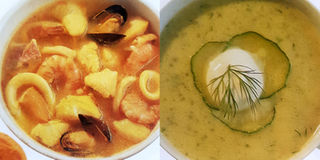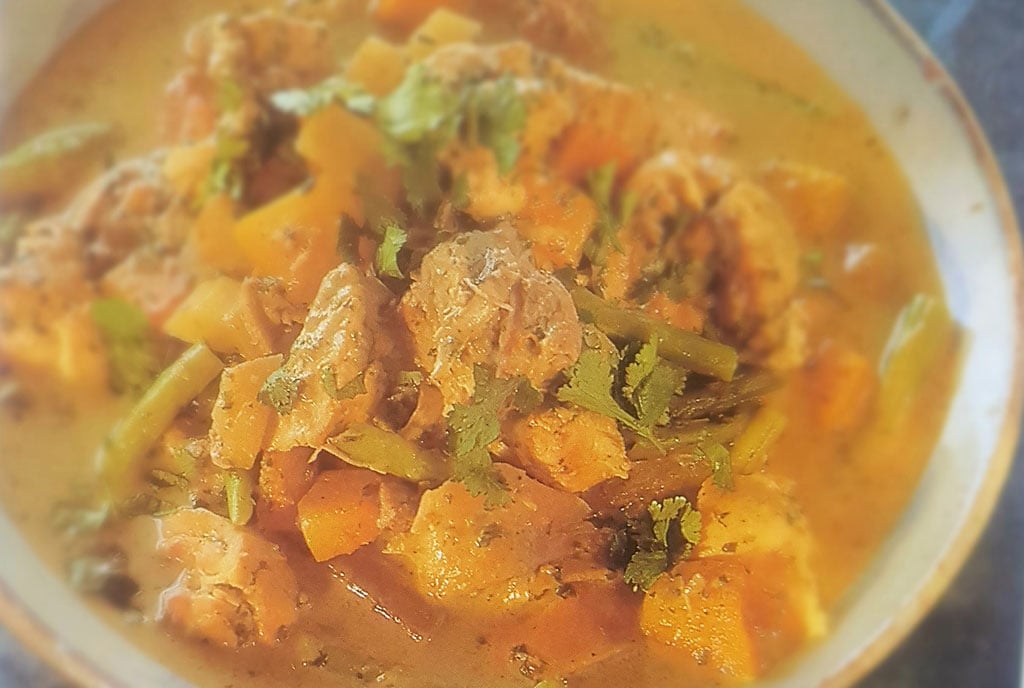Prime
Let us make and enjoy soups

A soup can be served as an elegant starter, become a snack served in a mug with crusty bread. PHOTOS/A KADUMUKASA KIRONDE II
What you need to know:
All about soup recipes. If you have always wanted to make soup but had no clue, here is the guide by A. Kadumukasa Kironde II
If I have always been of the view that the best soups are made with homemade stocks and there is no doubt that soups offer the most versatile and varied dish on any menu. Soup has the added advantage of having the flexibility of being made from a wide gamut of food ranging from fruit, vegetables, meat, poultry, fish or game. Soup can be uncooked and cold to provide a refreshing opening to a festive occasion of a meal, or hot and satisfying to provide a warming start to a meal in Kabale where the weather can get so cold.
A soup can be served as an elegant starter, become a snack served in a mug with crusty bread or it may be so chunky and thick it becomes a meal unto itself! The choice of ingredients can be expensive and exotic and unusual. Your pocket is the best judge. For that very special occasion there is nothing to beat a lobster bisque however, choosing inexpensive ingredients such as root vegetables or dried beans can be made into an equally fabulous and delicious soup; what is important is the combination of textures, flavours and colours are endless.
Soups are perfect for every occasion and range from clear soups, simple pureed soups, thickened and enriched with cream, eggs, some flavoured with herbs and others with spices. When you make soups yourself it means that you can ensure that they are nutritious and free from additives, colorings and preservatives while at the same time allowing for the best flavor and texture that suits your individual taste. Always bear in mind that the basis of any good soup is a well-made stock which requires ample time in terms of preparation.
The best stock is made by simmering bones or meat, a chicken carcass or fish heads and bones with a nice selection of aromatic vegetables and herbs or just vegetables and herbs so as to give a well flavoured liquid. Stock needs to be simmered for a long time and honestly speaking we may not always have the time to make it but if you do however, it is worthwhile making a large quantity and freezing what you have not used.
Nowadays there are very good stock cubes that are available to substitute and though they may be too salty, use less of the cube than recommended.
Consommé
When making a consommé soup, a clear soup that is made from enriched stock and then clarified to produce a crystal clear liquid, it is imperative to have a good homemade stock. Consommé soup makes an elegant start to any meal.
Seasoning
We must never forget one of the cardinal rule in soup making viz. is to season towards the end of the cooking. Frequently a liquid reduces during simmering and the soup flavoring becomes more concentrated during the cooking process. In order to capture the full aromatic and spicy flavor of paper, we suggest that it be ground and added at the very last moment. Taste after the chilling period and season again if need be. The addition of wine to soup often enhances its flavor but be careful not to over salt soups to which wine is added, as the wine intensifies the saltiness.
Thickening
There are various ways a soup can be thickened----- pureeing the ingredients reduces the mixture to a smooth consistency. Why not try varying the texture by not blending the soup until completely smooth? Alternatively, when using some recipes further sieving of the soup may be recommended after pureeing to discard seeds and skins of vegetables or bones of fish. Using cream and eggs beaten together will enrich a soup and act as a thickener. To prevent curdling, add a little hot soup to the cream mixture before whisking it into the soup.
Freezing
Sometimes one may find it difficult to make a small quantity of soup in which case cool the extra amount quickly and freeze at once. Most soups freeze well and I find it to be an excellent way of using excess vegetables or tomatoes. Avoid adding garlic to soup that is to be frozen. Moreover, the same goes with cream, eggs or milk should not be included before freezing as these can cause curdling. The trick lies in adding them at the reheating stage. Use delicate fish soups and oriental soups immediately after preparation or the flavour and texture will deteriorate and reheating will spoil the soup. On the other hand, the robust meat soups such as oxtail greatly benefit from being in the fridge overnight which enhances the flavours as they mature and mellow.
Garnishes
A wide range of garnishes can be used to add extra flare to soups. These can range from simply sprinkling some fresh herbs, grated cheese or swirls of fresh cream such as pasteurised Fresh Dairy Cream, croutons that can be made in many ways with a variety of flavorings. Rice and pasta can also be used not only as garnish, but also to make certain types of soup more substantial. As you gain more experience and confidence you will graduate from simple garnishes of cooked and raw vegetables to more complex items such as choux puffs and cheese filled pastries.




